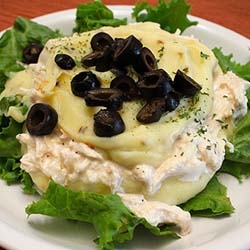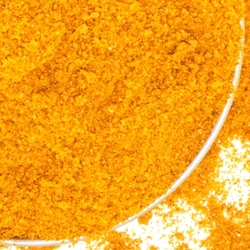Intro to Peruvian Cuisine

Caution: This post is not for the faint of heart, but for those looking to broaden their horizons!
Like many other countries, Peru has been influenced by immigrants in their culture and also their cuisine. Influences to Peruvian cuisine include the indigenous Inca, the Spanish, the Chinese, the Italians, the Japanese, the Germans and the Africans. Not only is the cuisine influenced by these groups of immigrants, it is also influenced by the various climates found throughout Peru. Peru is very unique in that it consists of 28 individual climates and also has a variety of water sources where fish can be found including the Pacific Ocean, the Amazon River and Lake Titicaca.
Table of Contents
Local Cuisine
The three traditional staples of Peruvian cooking are corn, potatoes, and chile peppers, which add a pinch of flavor to the two aforementioned staples. The types of potatoes found in Peru range somewhere between 3,800 and 4,000. It is said that 99% of all potatoes found in the world come from a subspecies of potato in Peru, so I guess we have Peru to thank for those glorious mashed potatoes on Thanksgiving!
Chiles have been cultivated in Peru for around 7,000 years, making them one of the first spices used in Peruvian cooking. Today, there are over 300 varieties of chile peppers in Peru and are essential parts of the local cuisine. One of the most well known chiles in Peru is the Aji Amarillo Chile, which translates to yellow chile, and is used as a condiment to flavor almost every dish from vegetables to meat and fish. We also like to use Aji Amarillo Chile Powder in rice, salsas, sauces and stews for a surprising and unexpected flavor. Another important chili in Peru is the Aji Panca. It is a close relative of the Aji Amarillo, and has a hot but not fiery taste with a hint of smoke and sweetness. These peppers can be used in the traditional lunch and dinner dishes, but can also be added to desserts for a sweet little kick.
National Dish
When most people think of a typical Peruvian dish quinoa may come to mind, but this is far from their national dish. The national dish of Peru is called Ceviche and consists of raw fish (normally white sea bass) marinated in Peruvian limes which is said to "cook" the fish, and mixed with cilantro, red onions and of course aji amarillos. It is generally served with a slice of sweet potato and cancha, or toasted corn kernels. To top it all off, finish with a side of hot limey fish broth and a cold cup of leche de tigre. This dish can be found in almost all Peruvian restaurants along the coast and is said to be of Spanish influence because of the limes used. If you think this meal is a little unusual brace yourself because there is more to come.
Food from the North
Because of the many different climates, the variety of cooking styles in Peru is great. Northern Peru offers a different style than the central and southern areas. Northern Peru has more of a native Indian influence which can be tasted in the cuisine. One dish called Shambar is a soup made with wheat, pork rinds, "Jamon Serrano" (smoked ham), assorted beans, and green onions. It is served with toasted corn (cancha) and is made only on Mondays. A spice that can be added to season any broth, chicken, fish, soup, stew or vegetable to give it a little kick is called Tempero Baiano.
Cuisine from the Amazon
As you could have guessed, the dishes made in the Amazon primarily use local ingredients. The paiche, one of the world's largest fresh water fish, is the staple of many dishes found in the Amazon. Other types of fish are also used and prepared in a variety of soups and vegetable dishes. While hunting turtle in Peru is illegal, dishes that include turtle are scarce but can be found at a steep price. The Black Caiman is also considered a delicacy, and you guessed it, is also illegal to hunt.
Food from the Andes
In the Andes, the local diet is mostly based on corn, potatoes, and other tubers . When it comes to meat a popular dish is cuy, or what most Americans would call guinea pig. Cuy is usually raised in the household and then baked or barbequed and served with the head attached. In many ways cuy can be compared to eating a rabbit, though guinea pigs are much bonier. Other indigenous animals that can be found in Peruvian dishes include alpaca, sheep, cattle, and swine.
Want to try your hand at creating an authentic Peruvian dish? Try our classic and delicious Peruvian dishes such as Peruvian Beef Stew. If that doesn't get your mouth watering feel free to check out National Geographic's Top 10 Things to Eat in Peru for some ideas.
Because there are so many different cultures and climates in Peru I cannot cover them all here, but I hope this is a good start to helping you get a taste of Peru!
Related Posts
Brazilian Cuisine 101
The Culinary Regions of African Cuisine
How To Build Flavors
You Might be a Chile Head...


